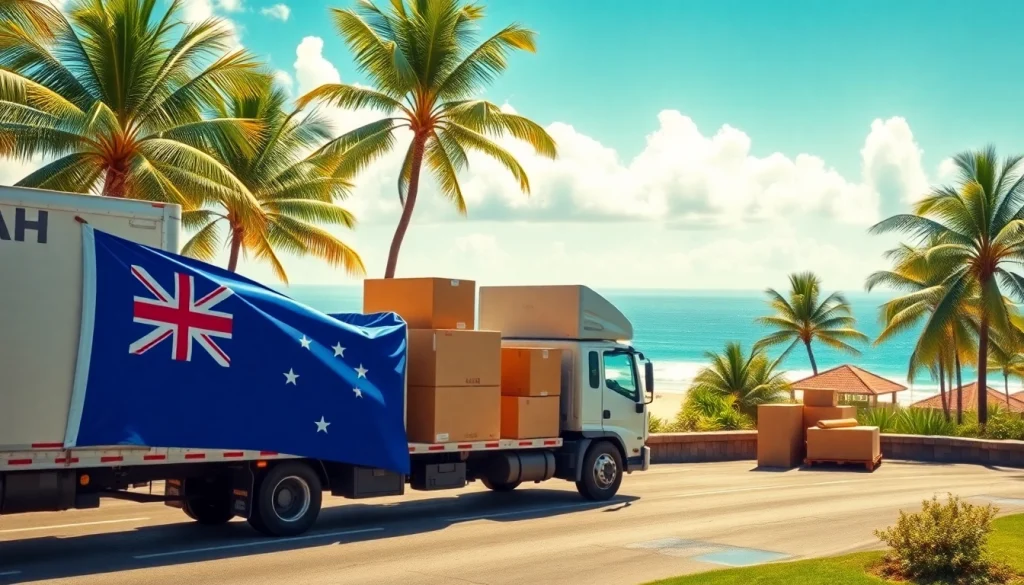
Understanding the Challenges of Moving from Alaska to Hawaii
Moving from Alaska to Hawaii can be both an exciting adventure and a daunting challenge. The transition between two distinct environments—one characterized by vast wilderness and cold climates, and the other by tropical landscapes and mild temperatures—requires careful planning and consideration. In this article, we will explore the various challenges associated with such a move, from travel distances and costs to the logistics of transporting your belongings, and how climatic differences can influence your experience.
Travel Distance and Costs
The distance between Alaska and Hawaii spans over 3,000 miles, making it one of the most significant interstate relocations in the United States. Given this vast expanse, it is crucial to plan your travel and moving logistics meticulously. The journey can take various forms: you could choose to fly and subsequently ship your belongings, or you may prefer to drive to a port. Regardless, travel and shipping costs are substantial. On average, the cost of moving household goods can range from $4,000 to $10,000, depending on the amount being moved and the method of transportation chosen. When calculating your overall moving expenses, include potential costs associated with airfares, vehicle shipping, and the price of hiring a moving company specializing in this unique route. For more information on services tailored for Moving from Alaska to Hawaii, be sure to explore multiple options to find the most cost-effective solutions.
Logistics of Moving Valuable Items
Shipping your belongings from Alaska to Hawaii is more than just packing boxes. The logistics involved in transporting valuable items demand careful planning and execution. Many moving companies offer full-service options, which include packing, loading, and shipping your goods. For those looking to save money, a DIY approach may also be a possibility, where individuals pack their items and hire a shipping company solely for transport. Regardless of the method chosen, ensure that you take the time to inventory your belongings, determine which items are essential, and understand the restrictions regarding what can be shipped to Hawaii. Certain items such as perishables, certain fruits, and some plants might not be allowed due to agricultural restrictions.
Weather Conditions and Their Impact
Alaska and Hawaii offer drastically different weather patterns, which can influence not just your journey, but also your acclimatization post-move. Alaska is known for its long, harsh winters, while Hawaii boasts a tropical climate conducive to year-round outdoor activities. If you are moving during a specific season, it is important to consider how this could affect your plans. For example, winter storms in Alaska can delay shipping schedules and logistics, so planning your move for the summer months can potentially enhance the efficiency of your relocation.
Planning Your Move: Essential Steps
A successful move from Alaska to Hawaii requires a strategic approach. Understanding each step in the planning process can simplify what seems like an overwhelming task. Below are the essential steps to ensure a smooth transition.
Creating a Moving Timeline
Developing a detailed moving timeline is a foundational step in your relocation journey. Begin by evaluating your moving date and working backward from there. Identify key milestones such as when to begin packing, scheduling moving services, and notifying relevant parties—utilities, postal services, and any subscriptions you may have. An effective timeline will not only keep you organized but also alleviate potential stress as the move approaches.
Researching Reputable Moving Services
Selecting the right moving company is pivotal for a successful relocation. Start by researching companies that specialize in long-distance moves, particularly those with experience in transitioning between Alaska and Hawaii. Look for reviews, request quotes, and inquire about any hidden fees. A reliable mover will provide transparent information regarding their services and help ensure your belongings are transported securely and in a timely manner.
Gathering Necessary Documentation
When relocating between states, you must also ensure that you have all the correct documentation. Depending on your specific needs, this may include titles for vehicles you plan to bring, ownership documents for your belongings, and any health and educational records if you have children. Additionally, confirm that you understand any residency requirements that Hawaii may have. Failing to prepare these essential documents could complicate your move and delay your settling-in process.
Costs Involved in Moving from Alaska to Hawaii
Understanding the costs associated with your move is fundamental to maintaining your budget and avoiding financial surprises. The financial aspects not only encompass transportation expenses but also indirect costs related to the relocation.
Estimating Moving Expenses
It’s essential to calculate your anticipated expenses thoroughly. This includes estimates for shipping your belongings, which could vary based on weight and distance, fees associated with temporary storage if necessary, and living costs during your transition. Preparing a comprehensive budget that accounts for all these aspects will better equip you for the financial implications of your move.
Insurance and Protection for Your Belongings
Insurance coverage during your move is critical, particularly for high-value items. Verify that your moving company provides insurance options and understand the differences between basic coverage and full-value protection. Depending on your chosen method of shipping, you might need to secure additional insurance, ensuring peace of mind knowing that your belongings are well-protected during transit.
Budgeting for Unexpected Costs
Despite thorough planning, unexpected expenses can arise during a move. It is prudent to allocate an additional fund (typically around 10-15% of your total budget) for unexpected costs—this can cover last-minute fees, storage costs if your arrival date shifts, or additional travel expenses. Being prepared will give you a buffer to handle these occurences without derailing your budget.
Comparing Living Conditions: Alaska vs Hawaii
Understanding the differences in living conditions can significantly enhance your transition experience. Both states offer unique advantages and challenges, requiring potential residents to adjust their expectations and lifestyles significantly.
Cost of Living Differences
The cost of living in Hawaii is notably higher than that of Alaska, influenced by Hawaii’s geographic isolation and reliance on imported goods. While housing may be less expensive in certain areas of Alaska, the overall expenses associated with daily life can add up in Hawaii—often forcing individuals to reassess their budgets. Conducting research on job markets, housing costs, and utilities in Hawaii can better prepare you for potential shifts in your financial responsibilities.
Cultural Adjustment and Lifestyle Changes
Relocating from Alaska to Hawaii brings a dramatic cultural shift. The pace of life in Hawaii is often more relaxed, with emphasis on community engagement and outdoor activities. In contrast, Alaskans might be accustomed to a more rugged, solitary lifestyle influenced by their vast natural surroundings. Understanding these cultural distinctions will aid in your adjustment, helping you embrace the new community and culture you’ll be entering.
Access to Amenities and Services
Your access to amenities and services is critical in evaluating living conditions. In Hawaii, you may enjoy access to some of the best beaches, water sports, and year-round outdoor activities unparalleled by Alaska. However, certain services, such as healthcare and specialized stores, could be less accessible in more remote Hawaiian locations. Assessing the availability of necessary amenities in your new neighborhood should be part of your moving considerations to ensure your new home meets your lifestyle needs.
Tips for a Smooth Transition
Transitioning to a new home, especially one across states, can be an adjustment. However, implementing several proactive strategies can foster an easier transition and help nurture a sense of belonging in your new environment.
Communicating with Movers and Settling In
Establishing clear lines of communication with your moving company can eliminate misunderstandings and ensure a smoother relocation process. Provide your movers with detailed information about your belongings, and make sure to confirm the timeline and responsibilities ahead of time. Once you settle in, take the opportunity to familiarize yourself with your new surroundings and engage with your neighbors to foster new relationships.
Building a New Community in Hawaii
Integrating into a new community in Hawaii will enhance your overall experience of moving. Attend local events, join community groups, and explore cultural festivals. Building relationships with locals can provide support in acclimating to both the lifestyle and community dynamics while also opening up social opportunities.
Accessing Resources for New Residents
Leverage resources designed for new residents, including local government websites that offer information on utilities, public services, education, and recreational activities. Many communities also have social media groups dedicated to newcomers; these can be invaluable for tips on the area and meeting other residents. By utilizing these resources, you can streamline your integration process and discover great local gems!






